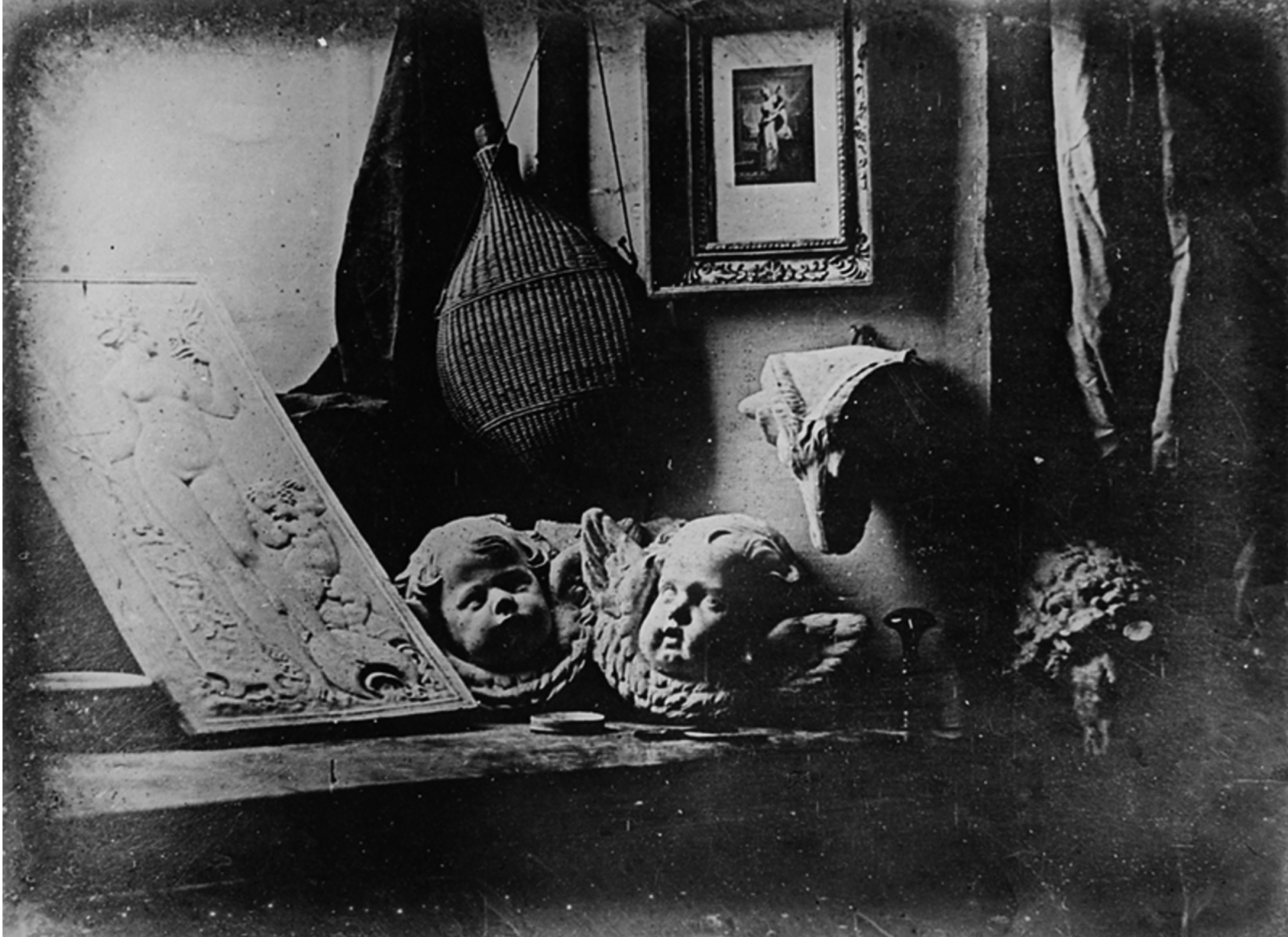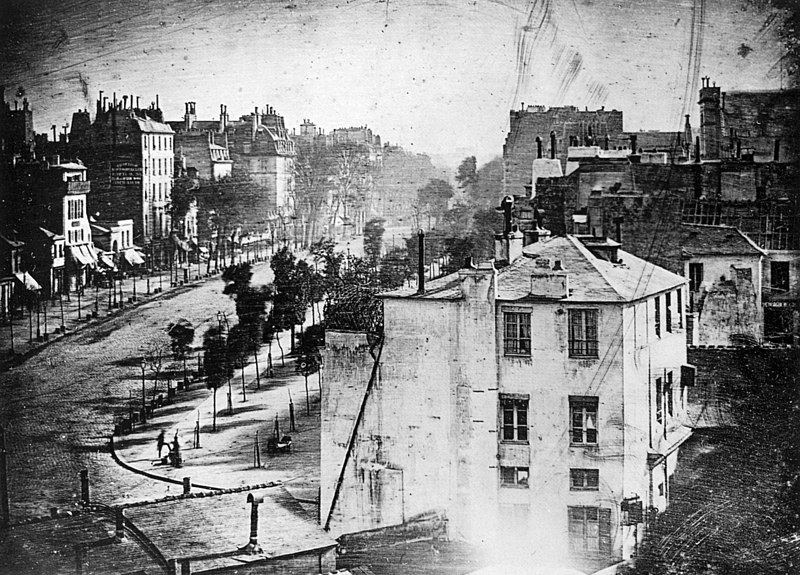Today, every single person carries a device around with them that can, among many other things, capture an image of a moment. But this wouldn't be possible if it weren't for the groundwork that was laid for it by French artist Louis Daguerre and his partner, inventor Nicéphore Niépce.
 |
| The first daguerreotype, taken by Daguerre himself in 1837 (via wikipedia) |
On this day in history in 1839, the French Academy of Sciences announced the birth of photography: the invention of the Daguerreotype. In order to capture an image, the subject had to sit still for fifteen minutes. This was followed by a long, arduous process involving various chemicals and treating methods, after which the image had to be kept in a case under glass to prevent the image from flaking away.
The first picture of a person was taken by Daguerre himself. The scene outside his window was of a busy street in Paris, the Boulevard du Temple. The desertedness of the image is a lie: traffic was as thick as ever, but none of the carriages were still long enough to be captured on film. The men in the lower left, however, were.
 |
| The Boulevard du Temple in Paris; the first photograph of a living human, taken by Louis Daguerre in 1838. (via wikipedia) |
Daguerreotype usage dropped off in the 1860s, when newer, easier ways of capturing images began to be invented. In the 1980s and 90s, however, artists began to become interested in it again, and daguerreotyping revived. There are less than one hundred daguerreotypes in the world today, and you can find their gorgeous works using this interesting antique medium at CDags.org.
No comments:
Post a Comment